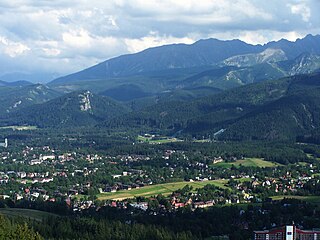
Zakopane is a town in the south of Poland, in the southern part of the Podhale region at the foot of the Tatra Mountains. From 1975 to 1998, it was part of Nowy Sącz Voivodeship; since 1999, it has been part of Lesser Poland Voivodeship. As of 2017 its population was 27,266. Zakopane is a centre of Goral culture and is often referred to as "the winter capital of Poland". It is a popular destination for mountaineering, skiing, and tourism.

Stanisław Wojciechowski was a Polish politician and scholar who served as President of Poland between 1922 and 1926, during the Second Polish Republic.

Stanisław II August, known also by his regnal Latin name Stanislaus II Augustus, and as Stanisław August Poniatowski, was King of Poland and Grand Duke of Lithuania from 1764 to 1795, and the last monarch of the Polish–Lithuanian Commonwealth.

Stanisław Wawrzyniec Staszic was a leading figure in the Polish Enlightenment: a Catholic priest, philosopher, geologist, writer, poet, translator and statesman. A physiocrat, monist, pan-Slavist and laissez-fairist, he supported many reforms in Poland. He is particularly remembered for his political writings during the "Great (Four-Year) Sejm" (1788–92) and for his large support towards the Constitution of 3 May 1791, adopted by that Sejm.

Count Edward Bernard Raczyński was a Polish diplomat, writer, politician, President of Poland-in-exile.
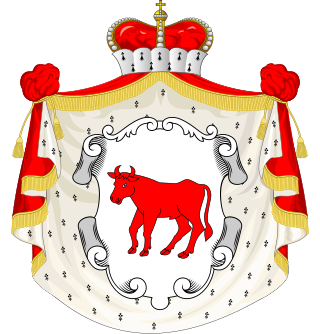
The House of Poniatowski is a prominent Polish family that was part of the nobility of Poland. A member of this family, Stanisław Poniatowski, was elected as King of Poland and reigned from 1764 until his abdication in 1795. Since Polish adjectives have different forms for the genders, Poniatowska is the equivalent name for a female member of this family.

The House of Zamoyski is the name of an important Polish noble (szlachta) family, which used the Jelita coat of arms. It is the Polish term for "de Zamość", the name they originally held as lords of Zamość. The family was influential in Polish politics for several centuries, and its members held various official titles, including those of Count and Countess.
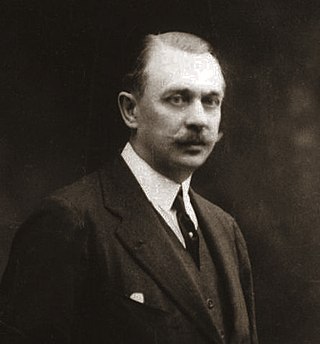
Count Maurycy Klemens Zamoyski was a Polish nobleman (szlachcic), politician, social activist, and Minister of Foreign Affairs in the Polish government of the 1920s.

Morskie Oko, or Eye of the Sea in English, is the largest and fourth-deepest lake in the Tatra Mountains, in southern Poland. It is located deep within the Tatra National Park in the Rybi Potok Valley, of the High Tatras mountain range at the base of the Mięguszowiecki Summits, in Lesser Poland Voivodeship. In 2014, The Wall Street Journal recognized the lake as one of the five most beautiful lakes in the world.

Józef Kiedroń was a Polish mining engineer and politician.

Mariusz Zaruski was a brigadier-general in the Polish Army, a pioneer of Polish sports yachting, an outstanding climber of the winter and caves of Tatra Mountains. He was a photographer, painter, poet and writer, a seamen and traveler, a conspirator, legionnaire and lancer in Polish cavalry.
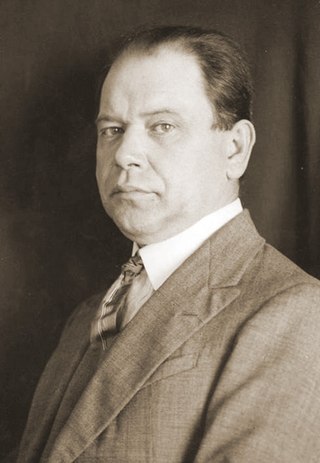
Władysław Skoczylas was a Polish watercolorist, woodcutter, sculptor and art teacher.
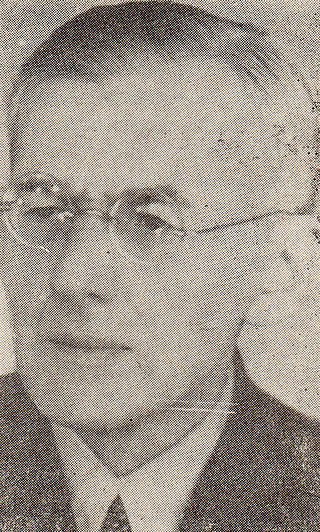
Adolf Chybiński (1880–1952) was a Polish historian, musicologist, and academic.
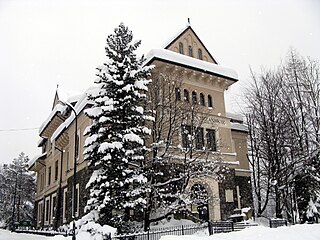
The Tatra Museum is a museum of the history, culture, nature and ethnography of the Polish Tatras; its main branch is located in Zakopane, Poland.

Sabała or Sablik was a Goral amateur musician, storyteller and folk singer active in or around the Tatra Mountains. A friend to many renowned Polish artists of the late 19th century, he is featured in numerous Polish works of art of the epoch.
Izabela Abramowicz was a Polish mathematician and mathematics educator. She was honoured with the Knight's Cross of the Order of Polonia Restituta for her services to mathematical education.

Józef Weyssenhoff was a Polish novelist, poet, literary critic, publisher. Close to the National Democracy political movement after 1905, he paid tribute to the tradition of the Polish landed gentry in the Eastern Borderlands. He lived several years in Bydgoszcz in the 1920s.

Clan Ostoja (Moscics) is one of the largest and oldest knightly and heraldic families in Europe, belonging to the Polish nobility. The family is sealed with the Ostoja coat of arms.
Ludwik Maria Łubieński, comte de Pomian was a Polish lawyer, diplomat and military officer. He was Head of the Polish Maritime Mission in Gibraltar during World War II and an eyewitness of the air disaster whose victim was the Polish wartime Premier and military leader, Władysław Sikorski. After the war, he became an expatriate official in Munich and London.

















